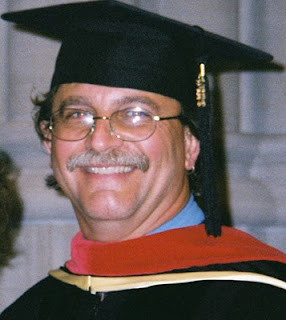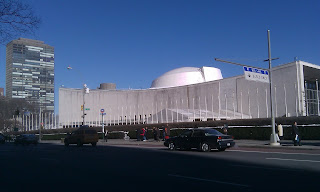“One Fat Sheep and Ninety-nine Lean Sheep”
A Sermon based on Ezekiel 34:11-16,20-24 and Matthew 25:31-46
By The Reverend John Edward Harris, D. Min.
North Church Queens
Flushing, NY
November 20, 2011
Christ the King Year A
This morning, through the prophet Ezekiel, we have once again encountered a familiar biblical metaphor, one that speaks of God as a shepherd. For Ezekiel, if God was a shepherd, then the people of Israel scattered throughout the Middle East after the fall and destruction of Jerusalem in 597, were God’s scattered sheep.
Following Babylonian King Nebuchadnezzar’s siege of Jerusalem in 597, Nebuchadnezzar installed Zedekiah as King of Judah. However, Zedekiah revolted against Babylon and entered into an alliance with Pharaoh. Nebuchadnezzar responded by invading Judah and began another siege of Jerusalem in January 589 BC.
In 587 BC, the eleventh year of Zedekiah's reign, Nebuchadnezzar’s army broke through Jerusalem's walls, conquering the city. Jerusalem was plundered and Solomon’s Temple was destroyed. The city was razed to the ground. Most of Jerusalem’s brightest, best and most talented were taken into captivity in Babylon. Only a small number of Jews were permitted to remain, left behind to tend to the land. Those Jews Jews who had not been taken into Babylonian captivity and could escape dispersed throughout the Middle East, becoming, metaphorically, God’s lost sheep.
Through Ezekiel, God promises to rescue and gather the lost sheep and to feed them with good pasture. God promises to nurse back to health any sheep that was injured. God promises to strengthen any sheep that was weak. Hearing, through the prophet Ezekiel, the prophet to the exiles, that God would seek out these lost sheep, these dispersed Jews, rescuing them from the places to which they had been dispersed, bringing them back into their own land, the Land of Israel, the land of milk and honey, would be good news if you were a Jews of the Diaspora.
However, there is also some bad news contained in Ezekiel’s prophecy. God also promises to destroy the fat and strong sheep, feeding them not with rich pastures, but with justice. Through Ezekiel, God promises to judge between the fat sheep and the lean sheep, claiming that the fat sheep have pushed with the flank and shoulder, and butted at all the weak animals with their horns until they scattered the weak sheep far and wide.
Just as we might ask what came first, the chicken or the egg, we might wonder if the weak sheep are week because they are lean, or if they are lean because they are week. On the one hand, the weak sheep are lean because the strong sheep have pushed and butted them around, preventing them from grazing in the best pastures, where they could eat their fill and no longer be lean. On the other hand, the lean sheep are weak because the strong sheep have pushed and butted them around, preventing them from grazing in the best pastures where they could eat their fill and grow stronger. While the weak sheep grow weaker and the lean sheep grow leaner, the strong sheep grow stronger and the fat sheep grow fatter because they have kept the best pastures for themselves.
Some scholars indentify the fat sheep as the nations, which, at that time, oppressed Israel, particularly Babylon. One could also interpret the fat sheep as the leaders of Israel who grew fat while the city was being besieged, the leaders of Israel whose failed foreign policy led to the city’s destruction.
Fast forward about six hundred years and we hear Jesus talking about himself as if he were a King, sitting on a throne, judging between the nations, separating people one from another as a shepherd separates the sheep from the … goats. It might surprise us that Jesus talks about sheep and goats when Ezekiel mentioned only fat, strong sheep and weak, lean sheep, except Ezekiel did not mention only sheep. In verses 17-19, verses we did not read this morning, Ezekiel also writes about God judging between “sheep and sheep, between rams and goats.” Therefore, Jesus was well within the prophetic tradition of Ezekiel, and may very well have had Ezekiel’s prophecy in mind, when he to talked about judging between the nations, metaphorically referring to them as sheep and goats. Sheep and goats, after all, are closely related. They are in the same subfamily but in are separate species.
According to Matthew’s Gospel, Jesus will judge between the sheep and the goats not based on how they appear, fat or lean, strong or weak, but how they act. The sheep who fed the hungry, the sheep who gave drink to the thirsty, the sheep who welcomed the stranger, the sheep who clothed the naked, the sheep who cared for the sick, the sheep who visited the imprisoned, will be judged righteous and will inherit the kingdom prepared for them from the foundation of the world. They will enjoy eternal life.
On the other hand, the sheep who did not give food to the hungry, the sheep who did not give drink to the thirsty, the sheep who did not welcome the stranger, the sheep who did not clothe the naked, the sheep who did not care for the sick, and the sheep who did not visit the imprisoned, will be judged accursed, finding themselves not in the kingdom prepared for them since the beginning of time but in the eternal fire prepared for the devil and his angels. They will suffer eternal punishment.
Now, fast-forward another 2,000 years. These are not the days of Ezekiel. Neither our city, nor our nation, is besieged by a foreign power. Instead, we are besieged by the threat of another recession, and the growing economic disparity between the rich and the poor, a disparity that is reaching proportions not seen since just before the great Depression.
Economists not only tell us that the income gap between the rich and poor in our nation is growing increasingly wider, but that the middle class, the backbone of American prosperity, is shrinking. Economists also tell us that the latest generation of Americans will be the first generation in our country’s history to enjoy a lower standard of living than enjoyed by their parents. Meanwhile, as Congress and its Super Committee cannot reach a compromise on a national budget, they have apparently determined at least one matter of national importance, that when it comes to school lunches, frozen pizza is indeed a vegetable. The United States Congress, just this past week, voted to rebuke new USDA guidelines for school lunches that would have increased the amount of fresh fruit and vegetables in school cafeterias and instead declared that the tomato paste on frozen pizza qualified it as a vegetable.
It is no wonder that hundreds, if not thousands of Occupy Wall Street protestors, prevented from actually occupying Wall Street, have instead occupied Zuccotti Park and numerous other public areas across the country in our major cities. The weak and lean sheep have grown weary of the fat and strong sheep pushing and butting them around and, as of yet, have not found any other or more constructive forum and way to express the frustration and outrage.
No, these are not the days of Ezekiel. These are not the days of Jesus. But I am convinced that if these were the days of Jesus that he would be camped out in Zuccotti park rather than roaming the halls of Congress or the trading floors of Wall Street. I think Jesus would be appalled that politicians who claim that this is a Christian Nation are proposing a national budget that would make the weak and lean sheep even leaner and weaker while enabling the fat and strong sheep to grow even stronger and fatter. A nation that fails to care for its hungry, its thirsty, the stranger, the naked, the sick, and the prisoner, not to mention its homeless, its aging, and its veterans, has no right to call itself or consider itself a Christian nation, or even a just and good nation!
Earlier in Matthew 18:12-14, we hear Jesus say “What do you think? If a shepherd has a hundred sheep, and one of them has gone astray, does he not leave the ninety-nine on the mountains and go in search of the one that went astray? And if he finds it, truly I tell you, he rejoices over it more than over the ninety-nine that never went astray. So it is not the will of your Father in heaven that one of these little ones should be lost.” From a Christian ethical perspective, we might say, in our context that it is the wealthiest one percent of American sheep that has gone astray. As the wealthiest one percent has gone astray, they have left the other ninety-nine percent behind.
In our current economic, political and social context, “The One Percent” was at first a 2006 documentary about the growing wealth gap between America’s wealthy elite compared to the overall citizenry. The film's title refers to the top one percent of Americans in terms of wealth, who controlled 42.2 percent of total financial wealth in 2004. More recently, the Ninety-nine percent has become the self identifying rallying cry of the unemployed, under-employed, college graduates with thousands of dollars of student loan debts but who cannot find a job to help them pay off their debt because there are no jobs, former home owners who have had their mortgages foreclosed, and the millions of Americans without access to health care, who are demonstrating against the concentration of wealth by the top 1%
Who are the 1%. Based on 2009 tax year filing data, the Internal Revenue Service says an adjusted gross income of $343,927 or more will put you in the top 1 percent of taxpayers. I doubt if many, or any, of us worshiping here this morning would qualify. Yet, “Roughly 11% of Congress have net worth of more than $9million, according to a USA TODAY analysis of 2010 financial disclosures complied by the center for Responsive Politics. That is enough to put them in the top 1% of wealth. Congress also has 250 millionaires, the data shows. The median net worth: $891,506, almost nine times the typical household.” No wonder Congress is doing nothing. They can afford to do nothing. Follows of Christ, however, must do something.
I am not alone in thinking that if Jesus were here today, we would find him in Zuccotti Park. We probably would also find there John Calvin. According to Setri Nyomi, the General Secretary of the World Communion of Reformed Churches, “The cause of demonstrators involved in the “Occupy Wall Street” movement would have been supported by John Calvin, the 16th century church reformer who helped shape modern-day Protestantism” In a lecture he delivered this past Tuesday at Princeton Theological Seminary, he said “I am sure [Calvin] would have been in the streets of New York or London with a placard. ” After all, Calvin wrote extensively about social and economic justice, almost as much as he did about theology. Calvin cared as much about Geneva having a working sewer system for all who lived there as he cared about the salvation of all who lived there. According to Nyomi, “Calvin expressed opposition to all forms of social oppression resulting from money.” Nyomi believes Calvin’s words resonate with life today. “The church of the 21st century needs to align itself with voices of justice … even if it means being out there in the streets,” he writes.












